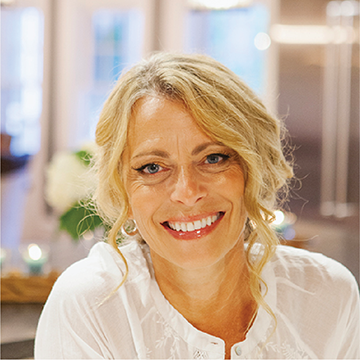
Photo by Edward Cisneros on Unsplash
To mark the occasion of my fortieth birthday (let’s just say it was a while ago), I decided to do something that scared me. Not bungee jumping or race-car driving–something far more terrifying.
I decided to sing in front of people.
Having suppressed my desire to sing for over thirty years, the milestone birthday magnified the possibility that fear might win both the battle and the war, that I might go through the rest of my life wondering if I could have done it and, ultimately, regretting that I hadn’t tried.
Everyone has regrets. Missing an epic shoe sale, buying a lime-green car, lending money to a friend—all regrettable decisions. But I was suppressing something that fed my soul, that gave me joy from the inside out. The only thing preventing me from singing was my negative inner dialogue, and to battle that kind of monster meant being less comfortable with the threat of regret than with the prospect of utter humiliation.
Although it didn’t occur to me then, I was also building resilience for my older years. A study conducted by German researchers (and reported in the journal Science) concluded, “disengagement from regret reflects a critical resilience factor for emotional health in older age.” All well and good, but little comfort from the still painful memory of a disastrous high school audition for Pippin. Still, I opted for fight over flight, and braced for the battle the only way I knew how—one step at a time.
Step One: Find a Helper
Finding a voice teacher felt like a good start: If I could sing in front of one person, maybe courage would take root and grow. I found Christine, a petite Bohemian with a mop of black hair drawn up into a salt-and-pepper souffle on her forehead. Her modest, welcoming home smelled of curry and patchouli, and I was awestruck by her rich, velvety voice and how effortlessly she summoned it. Her hands waved in flourishes as she led me through nose-vibrating scales and vocal exercises replete with la’s, eeeeh’s and oooohs. Although sounding more like a wounded animal than a vocalist, I came through the process a bit less unnerved by singing, if not more bold.
After several months, Christine introduced me to her son, Rob, an accomplished musician who ran a recording studio in town. Rob quickly became a mentor, teaching me how to sing into a mic and how the recording process worked. Then, after a few months, he said, “It’s time for you to find a band.”
Step Two: Push the Envelope
Sure. I’ll just go ahead and find a band.
It was 2001, long before the days of the pajama-pants-internet-search. Rob told me that a local music store was holding auditions to put bands together, the mere thought of which sent shivers up my quickly weakening spine. But I felt compelled to capitalize on the small measure of courage I had managed to muster, so I took a slot.
Driving to the audition, I recited out loud:
Act like you’ve done this a thousand times before. If you hesitate, you’re toast.
I felt lightheaded, my mouth was parched, and I couldn’t even embrace the consolation that no one would be posting my blunder on Instagram.
Step Three: DO IT
Against all odds, I convinced the guy at the audition that I had taken a break from the music scene for a while but was ready to get back in the game (saved again by the YouTube-less world). If memory serves (which it usually doesn’t) I sang a Bonnie Raitt tune. I closed my eyes for most of it, swaying and rocking as if transported by the song (but really imagining myself riding a unicorn on the beach while wrapped in a cotton candy blanket).
When I opened my eyes, the guy was still in the room. A victory. Then he said he liked my blues-y voice. Another one. But when he said he had three players he thought would be a good match for my sound, I smelled cotton candy.
And, just like that, I was in a band.
We called ourselves The Rolling Heads and started weekly rehearsals. And, like in most of life’s creative endeavors, one thing led to another. And another. And a few others.
That was nineteen years ago, and I’ve been singing in bands ever since. I’m grateful each time I face an audience of listening faces and I embrace every opportunity to collaborate with other musicians. That first, petrifying audition was a pivotal step in learning that convincing myself was the key to it all, one that opened a gateway to discovery and deep fulfillment.
Fear and the will to embrace it, as it turns out, make a beautiful duet.


